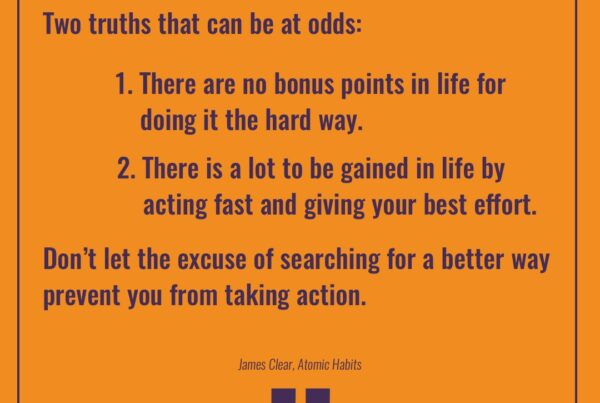Have you ever heard a young child emphatically say: I. Can. Do. It. Myself. when you attempt to help them with a task they are truly invested in completing themselves?

Because you are in a rush to get out the door you “help” them put on their boots or zip their coat or you tug those mittens on for them. Then the tears or temper tantrum show up, right?
The tears or temper tantrum show up because they’re feeling disempowered. You’ve asked them to do things on their own. You’ve even patiently shown them HOW to do that exact task. Yet, in your rush to get somewhere, you take over.
What does this have to do with your nonprofit board?
A long-time mentor once told me, “When you rescue someone, you disempower them.”
Let me give you an example (based on a true story).
Lois is a retired nonprofit executive who offered to tackle the project of getting some materials completed (final copy written, proofed, and printed) for a small arts organization. The $5+ million campaign is the largest the organization will ever undertake. Lois, in her professional and volunteer work, has successfully completed all aspects of many multi-million capital and annual campaigns.
She was delighted to take on the project management of this small, but important project. The organization’s staff of four, all program positions, had never handled a project of this type for a capital campaign. Taking the project off their hands made her proud. It made her feel as though she was making a significant difference.
Lois is a good writer. She’s excellent at follow-up and doing complete work. She shared with me how she felt she would provide this organization with the best final pieces possible.

Near the end of the printing process a staff person jumped into the mix and took on the role of working directly with the printer and some of the other campaign committee members, leaving Lois out of the loop.
Lois told me that when she realized what was happening she was angry at first and then she felt as though she simply didn’t matter to the project or the organization.
In a word, Lois felt disempowered.
“I didn’t want to keep bothering you.” That’s what the staff person said to explain his behavior to Lois.
The staff member took back the project without discussion. He did to Lois what we sometimes do with those children I mentioned at the top of the post: he did it himself, his way; instead of allowing Lois, the volunteer who was incredibly invested in doing this on her own, to finish the project.
Long story short, similar actions continued to happen throughout the project. Numerous times the same staff person swooped in to “rescue” Lois from “all the work she was doing.”
Suffice it to say, Lois is no longer volunteering with that organization.
Lois said she felt as though they were allowing her to go through the actions but the staff simply couldn’t keep away from the project, even though she was the most qualified to complete it.
In this case, a staff person who wanted to control the outcome spent precious time working on something he didn’t need to, and let other program-related tasks fall by the wayside.
In the scheme of life it’s insignificant. But for Lois, and so many other volunteers, nonprofit board members, and donors, it mattered that the project was hers. She was taking pride in completing the project, until she was rescued.
My heart was saddened when Lois shared her story with me. She wanted to give her gifts and talents in a way she felt would be most helpful. She wanted to be of service.
My questions to you are:
1. Do you know what gifts and talents each board member and key volunteer possess?
2. Do you allow those gifts and talents to serve your organization in the way the supporter intends? OR do you rescue the task or project because it’s not being completed your way?
There is plenty of work to go around if you are working hard to fulfill your mission.
Share it. Allow others to feel the ownership of serving you.
And maybe, just maybe, you’ll accomplish more, together.
Want more tips for engaging your board? Download Mission Possible: Your Workbook for a Successful Board that includes some of my favorite worksheets and templates to help you create an amazing board experience AND cause board engagement all year-long.







How far do you push when a board member is more than qualified but consistently does not follow through and complete the tasks that he volunteers to do ?
Great question, Skip. The truth is you can’t “push” unless you’ve built a culture of accountability. Meaning: How are you measuring board success? What activities has the board agreed to do to support your organization? Do you have a board agreement that gets annually updated by them and you? It’s all about communication…before, during and after you’ve recruited me to join your board. Here’s a link to a free ebook that has some helpful tools you can use: https://ignitedfundraising.com/mission-possible-workbook-successful-board/
The tools in the ebook are discussed in more detail in the Fundraising! Not my job! webinar that I offer to participants in my Ignite Your Fundraising Results program. Good luck!